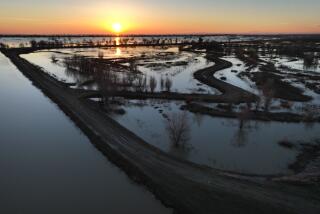Readers React: There’s a lot about water in California that we don’t know. We need more data.
- Share via
To the editor: While showing images of recently refreshed reservoirs in the northern part of the state, The Times was right to make sure its readers knew that California’s drought isn’t over. What you see at the surface — in lakes and rivers — can belie what’s underneath. (“Reservoirs are getting a big boost from ‘Miracle March’ — but the drought isn’t over yet,” March 18)
There is so much we don’t understand about California’s hydrology and water supply.
Without better data — and the systems to turn raw data into usable information — we can’t prepare for the next drought or flood. Advanced measurement methods should be deployed, existing data made public, and dormant stream gages funded and brought back online.
Turning these data into usable information is necessary to support sound management decisions. Modeling, policy analysis and stakeholder engagement are also in need of broader local, state and federal support.
Better data systems can result in better decisions for California and the world, but without increased support for better water information, we won’t be able to harness the momentum generated by World Water Day.
Michael Kiparsky, Berkeley, and Joshua Viers, Merced
The writers are directors of the University of California Water Security and Sustainability Research Initiative.
..
To the editor: This article notes that the water table in the San Joaquin Valley is at an all-time low. This is causing hardship for many people who live there.
Trying to recharge an extremely low water table in the classic way using spreading basins — where water flooding the surface trickles into the soil — is a recipe for disaster. Inevitably, settling will result, water storage volume will be lost forever, and the water will be too dispersed to be useful.
A new approach should be used. New wells should be drilled with the explicit intent of recharging the water table from the bottom up. Not only will this place the water where it can be useful immediately, but if the well pipe is perforated, a column of moist earth will be created. This column will prevent settling.
Since there are no evaporation losses with this approach, it should always be preferred to reservoir storage.
Bob Gould, Palm Desert
Follow the Opinion section on Twitter @latimesopinion and Facebook
More to Read
A cure for the common opinion
Get thought-provoking perspectives with our weekly newsletter.
You may occasionally receive promotional content from the Los Angeles Times.










